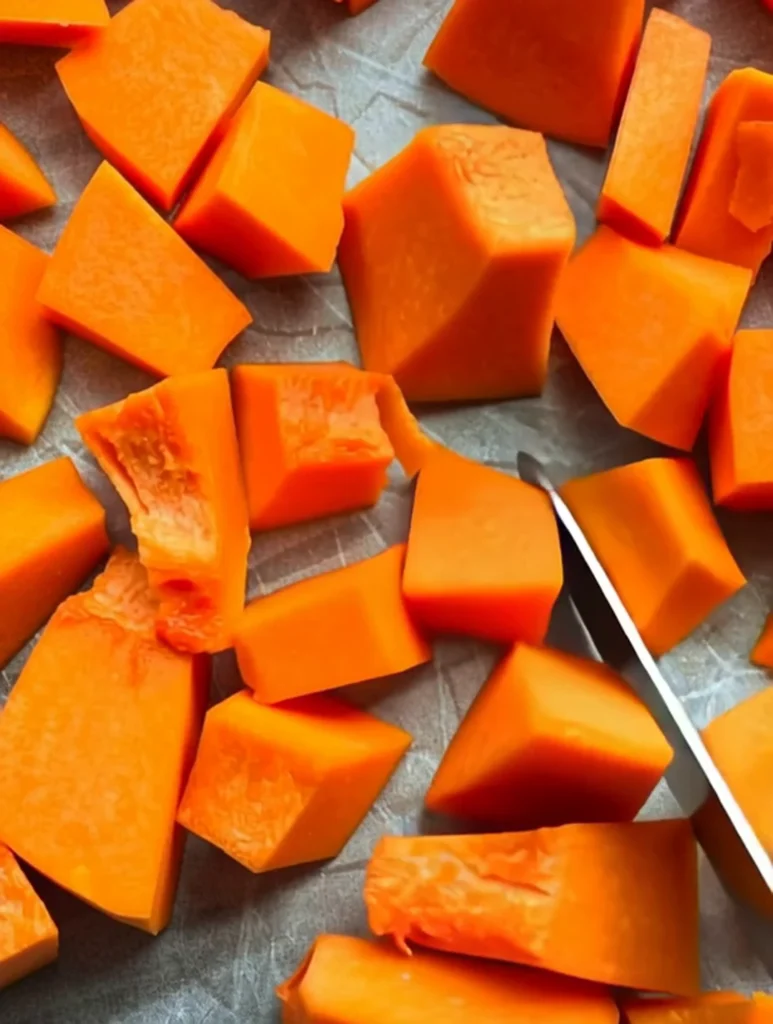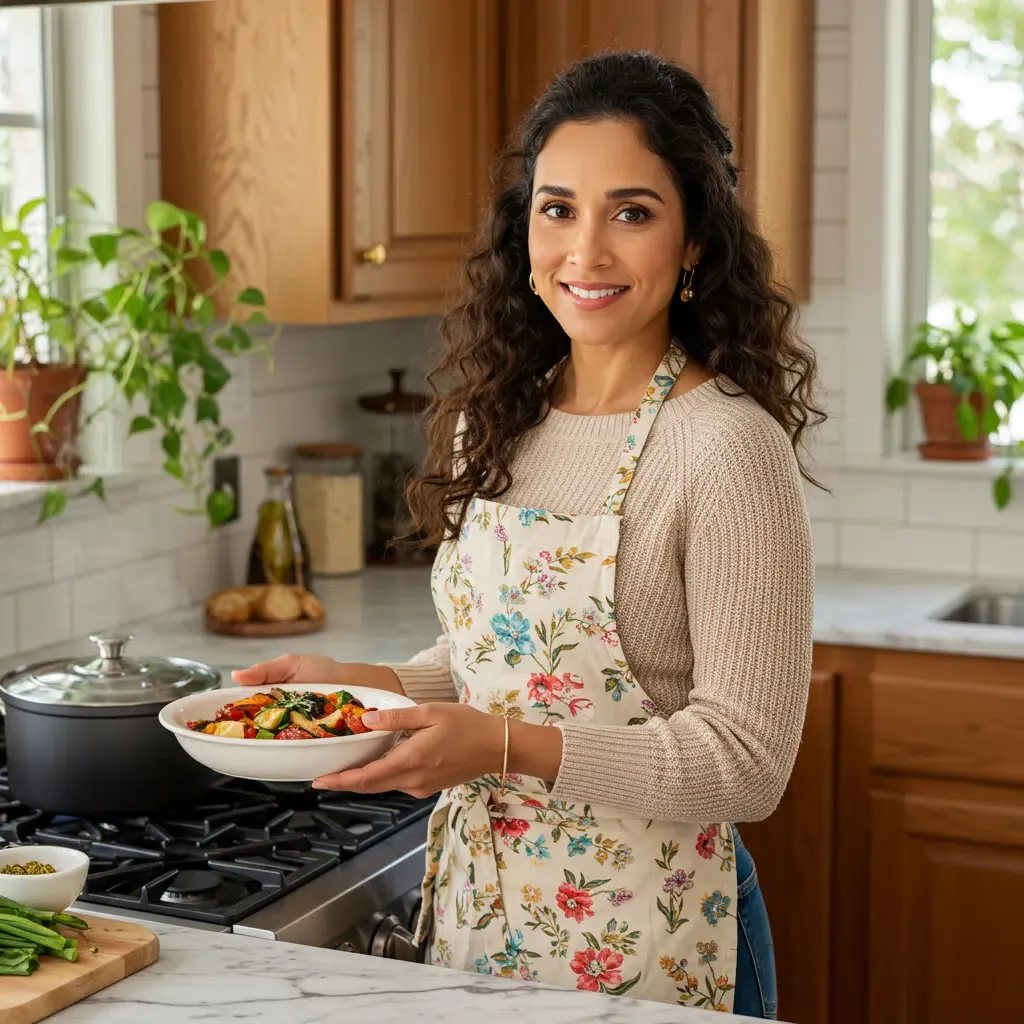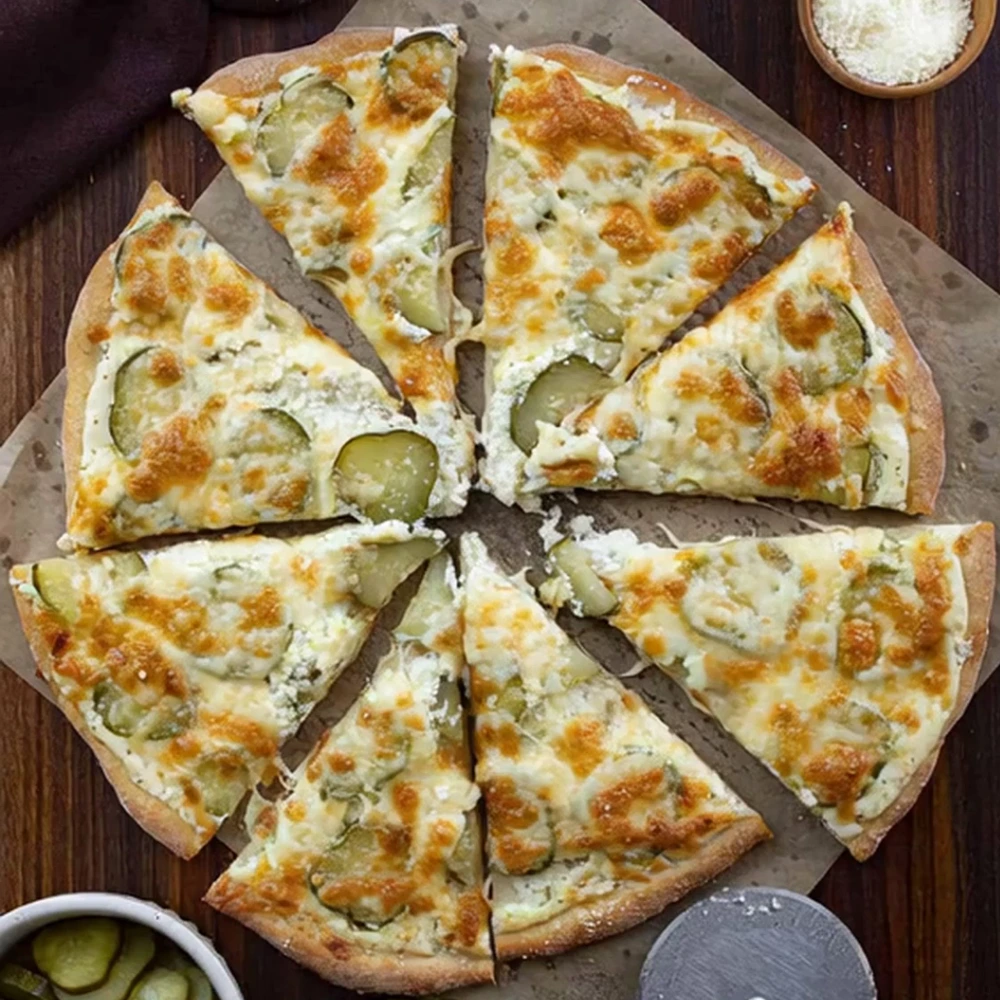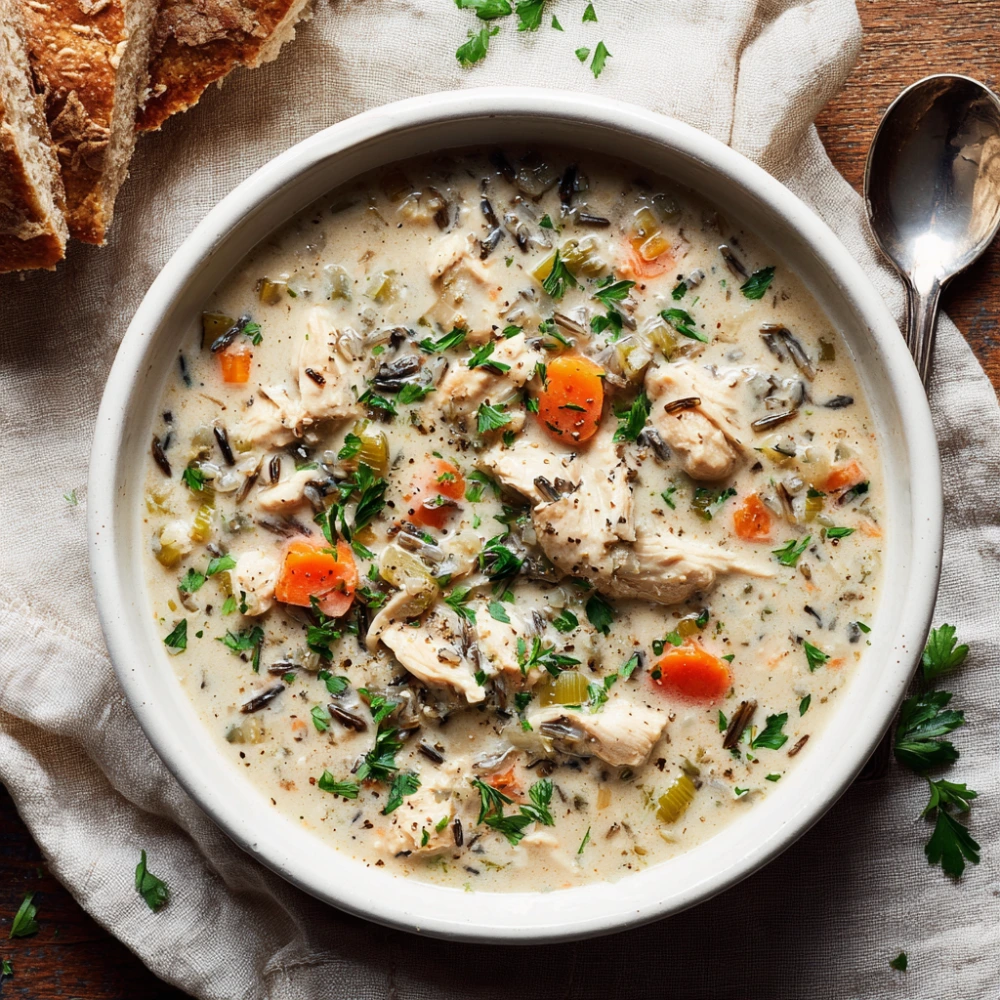Learn how to make pumpkin puree from scratch with just one ingredient and a little bit of cozy fall magic. Whether you’re baking pies, whipping up soups, or just feeling extra seasonal, homemade pumpkin puree is surprisingly easy and way better than the canned stuff.
I’ll show you exactly how to make it step by step, how to store or freeze it, and how to use it in all your favorite recipes. Trust me once your kitchen starts smelling like roasted pumpkin, you’ll be hooked.
Table of Contents
Table of Contents
Why Homemade Pumpkin Puree Beats Canned
Let’s be honest ,when you’re in the middle of prepping a recipe and it calls for pumpkin puree, reaching for a can is quick, easy, and reliable. But here’s the thing: once you taste homemade pumpkin puree, it’s hard to go back. It’s not just about flavor (though that’s a huge part). It’s also about texture, nutrition, and even emotional satisfaction. There’s something deeply comforting about transforming a fresh pumpkin into silky puree in your own kitchen , especially when the oven’s warmth starts wrapping your home in that sweet, earthy aroma.
Fresh Flavor & Control Over Quality
Canned pumpkin puree is a convenient shortcut, but it often comes with trade-offs, unpredictable texture, muted flavor, and a bit of a “processed” vibe. Homemade pumpkin puree, on the other hand, has a clean, naturally sweet taste and vibrant orange hue that varies slightly with each pumpkin variety you try. That’s part of the magic, every batch feels like its own little creation.
Plus, when you make your own, you control every step: the pumpkin you choose, how it’s roasted or boiled, how smooth or chunky you want it. Want a little salt or olive oil for a savory dish? Add it. Making a dessert? Keep it clean and sweet. No mystery fillers, no metallic aftertaste, just pure pumpkin.
Canned Pumpkin Puree vs Fresh: What’s the Difference?
Here’s a quick breakdown of how they stack up:
- Flavor: Homemade is naturally sweeter and more complex; canned is often bland or one-note.
- Texture: Fresh puree tends to be silkier, while canned can be dense or even slightly gritty.
- Color: Store-bought puree varies from dull orange to brown, while fresh puree offers a bright, natural glow.
- Additives: Some canned versions include preservatives or thickeners. Homemade? Just pumpkin.
While some brands of canned pumpkin puree are better than others, none quite capture the depth and nuance of fresh. It’s a bit like comparing boxed mashed potatoes to the real thing, technically similar, but worlds apart. Plus, you might be surprised to learn that most canned pumpkin isn’t even made from the orange pumpkins you’re picturing, it’s often a blend of squash varieties.
Choosing the Best Pumpkin Varieties for Puree
Not all pumpkins are created equal, especially when it comes to making pumpkin puree. If you’ve ever tried turning a leftover Halloween carving pumpkin into a pie, you probably know what disappointment tastes like: watery, stringy, bland mush. That’s because the right pumpkin makes all the difference.
Sugar Pumpkins, Pie Pumpkins, and Why Size Matters
For a naturally sweet, velvety puree, opt for sugar pumpkins (sometimes labeled as “pie pumpkins”). These smaller, rounder varieties are bred specifically for cooking, not for display, which means they deliver richer flavor and better texture. They’re also easier to handle, roast evenly, and contain less moisture, so you don’t end up with soup when you wanted puree.
A good rule of thumb? If it looks like it belongs in a pumpkin patch photo shoot, it probably won’t taste great.
Great Alternatives: Kabocha, Butternut & Beyond
If you can’t find a classic pie pumpkin, don’t worry, some squash varieties work just as well (if not better). Kabocha squash is a favorite among chefs for its deep, nutty flavor and low water content. Butternut squash is another excellent stand-in, slightly milder but smooth and versatile, and often easier to find year-round.
You can even experiment with different varieties to find your favorite. Each type brings a subtle variation in taste and color, making your pumpkin puree more personal and unique.

How to Make Homemade Pumpkin Puree: A Step‑by‑Step Guide
Ingredients
- 1 medium baking pumpkin (around 3–4 lbs)
Instructions
- Preheat oven to 350°F (180°C).
- Prepare the pumpkin: Cut in half, scoop out seeds, peel, and chop into chunks.
- Roast: Place chunks on a parchment-lined baking sheet. Roast for 25–30 minutes or until fork-tender.
- Cool slightly, then transfer to a food processor or blender.
- Blend until smooth. Add a splash of water only if needed for texture.
- Use immediately, or store in an airtight container in the fridge for up to 5 days, or freeze for up to 3 months.
Notes
- For smoother puree, roast instead of boiling.
- Strain through cheesecloth if too watery.
- One medium pumpkin yields about 1½–2 cups of puree.
How to Make Pumpkin Puree from Scratch
Making pumpkin puree at home is surprisingly simple, and once you’ve done it once, it becomes one of those cozy fall rituals you’ll actually look forward to. With just one ingredient, pumpkin, and a little time, you can whip up a batch that puts the canned version to shame.
Step 1: Prep Your Pumpkin
Start by washing the pumpkin and patting it dry. Then cut it in half, right down the middle, and scoop out the seeds and stringy bits. (BTW, don’t toss those seeds. Roast them with some salt or spices for a crunchy snack.)
Once cleaned, cut the halves into quarters and peel the skin off. You can use a vegetable peeler or a sharp knife, whatever feels safer in your hands. Then chop the pumpkin into evenly sized chunks to ensure it cooks through properly.

Step 2: Choose Your Cooking Method, Roasting vs Boiling
Here’s where you get to decide your flavor direction.
- Roasting Method (for richer flavor):
Preheat your oven to 350°F (180°C). Spread the pumpkin cubes on a baking sheet lined with parchment paper. Roast for 25–30 minutes, or until fork-tender and lightly golden on the edges. Roasting reduces moisture and deepens the natural sweetness, perfect for baking. - Boiling Method (quicker, milder):
Bring a large pot of water to a light boil, then add your pumpkin chunks. Simmer for about 15 minutes until they’re soft enough to mash with a fork. Drain well. This method is faster, but the puree may be slightly wetter, fine for soups or sauces.
Step 3: Blend Into Smooth Pumpkin Puree
Toss the cooked pumpkin into a blender, food processor, or use an immersion blender if you boiled it. Puree until smooth and silky. If it’s too thick, add a spoonful of water at a time until you get the texture you like. If it’s too thin (more common with boiled), strain it through a cheesecloth or fine sieve.
Storage, Freezing & Preservation of Pumpkin Puree
Once you’ve made a batch of fresh pumpkin puree, the next question is, how long can you keep it? Luckily, homemade puree is just as storage-friendly as the canned kind (and in many ways, even more flexible).
How to Store Pumpkin Puree in the Fridge
If you’re planning to use your pumpkin puree within a few days, the fridge is your best bet.
- Let the puree cool completely at room temperature.
- Transfer it into an airtight container (preferably glass or BPA-free plastic).
- Store in the refrigerator for up to 4–5 days.
Tip: Label the container with the date you made it, easy to forget when you’re deep into fall recipe mode.
Freezing Pumpkin Puree for Long-Term Use
Have more pumpkin puree than you can use right away? Freeze it! Here’s how to do it right:
- Let the puree cool fully.
- Portion it into ½ cup or 1 cup portions — perfect for baking recipes.
- Scoop into freezer-safe bags, ice cube trays, or small containers.
- Flatten bags to stack easily and save space.
- Label with the date and amount.
It’ll last for up to 3 months in the freezer. To use it again, just thaw in the fridge overnight or use the defrost setting on your microwave. Stir well before adding to recipes, some separation is natural.
Bonus tip: If you freeze it in ice cube trays, you can toss a cube or two into smoothies, oatmeal, or sauces for an instant fall flavor boost.
Delicious Ways to Use Pumpkin Puree
Now that you’ve got a batch of fresh, golden pumpkin puree, the fun really begins. It’s endlessly versatile, you can go sweet, savory, or somewhere in between. Whether you’re baking up cozy treats or adding a subtle fall twist to your everyday meals, pumpkin puree has your back.
Baking with Pumpkin Puree
Let’s start with the obvious: baking. Pumpkin puree is a rockstar in the kitchen when it comes to:
- Muffins and quick breads (pumpkin banana bread, anyone?)
- Classic pumpkin pie
- Cakes, donuts, and even cheesecake bars
- Pumpkin scones or cookies
And if you’re planning to make pumpkin pie from scratch, don’t forget the crust, a good one can make or break the whole dessert. Try this Irresistibly Easy Pumpkin Pie Crust Recipe You’ll Love Every Fall to complete the full homemade experience. It pairs perfectly with your fresh puree.
Savory Ideas: More Than Just Dessert
Pumpkin isn’t just for sweets, it brings richness and depth to a lot of savory dishes too. Stir some into:
- Creamy pumpkin pasta sauce with garlic and sage
- Pumpkin soup with coconut milk and curry spices
- Pumpkin risotto with parmesan and crispy shallots
- Veggie chili or stews for added body and flavor
It even works in breakfast dishes. Think:
- Swirled into oatmeal
- Blended into smoothies
- Spread on toast with a drizzle of maple syrup and cinnamon
Pumpkin puree is also great as a hidden veggie boost in kids’ meals, mix into mac and cheese, quesadillas, or even pancake batter.
Final Thoughts & Tips for the Best Homemade Pumpkin Puree
If you’ve made it this far, you’re probably already smelling roasted pumpkin in your imagination, and honestly, that’s the best part. There’s something incredibly grounding about turning a whole, humble pumpkin into a batch of smooth, golden puree. It’s simple, it’s seasonal, and it just feels good.
Whether you’re baking a pie from scratch (don’t forget that easy pumpkin pie crust!) or stirring a spoonful into your morning oats, homemade pumpkin puree gives your food, and your fall, a little extra soul. It might take a bit more time than cracking open a can, but the flavor payoff and the satisfaction of doing it yourself? Worth it every single time.
So next time you spot a sugar pumpkin at the market, grab one. Or two. Roast them, blend them, and freeze whatever’s left. That way, a taste of fall is always just a spoonful away, no label required.
FAQs: Common Questions About Pumpkin Puree
Even though making pumpkin puree is simple, there are a few recurring questions that come up, especially when swapping between fresh and canned or using it in unfamiliar recipes. Let’s clear a few things up.
Is Homemade Pumpkin Puree Really Worth the Extra Effort?
Absolutely. If you’re baking for a special occasion or just want to elevate your seasonal recipes, the jump in flavor is noticeable. Plus, making pumpkin puree is far simpler than most people think, no complicated equipment or ingredients needed. Once you try it, you’ll probably end up freezing a few extra batches to have on hand for the whole season.
Can I Use Carving Pumpkins for Puree?
Technically yes, but you probably won’t want to. Carving pumpkins are grown for size and shape, not taste. Their flesh is stringy, watery, and bland. If you’re in a pinch, you can try roasting them longer to reduce moisture, but the flavor will still fall flat compared to proper cooking varieties like sugar or kabocha pumpkins.
Can I Leave the Skin On When Making Pumpkin Puree?
It’s best to peel the pumpkin before roasting or boiling. While the skin of some squash varieties is technically edible, it doesn’t break down well in a puree and can mess with the texture. For the smoothest results, stick to just the flesh.
Can I Refreeze Thawed Pumpkin Puree?
Ideally, no. Refreezing can change the texture and reduce flavor. If you thaw more than you need, try using the leftovers in pancakes, muffins, or even stirred into your next bowl of soup.
What Can I Do With Leftover Pumpkin Puree?
If you’ve got a few tablespoons left over, try stirring it into Greek yogurt with a dash of cinnamon, using it as a base for a quick dip with hummus, or even freezing it in ice cube trays to toss into your next smoothie. It doesn’t take much to make something taste like fall.






